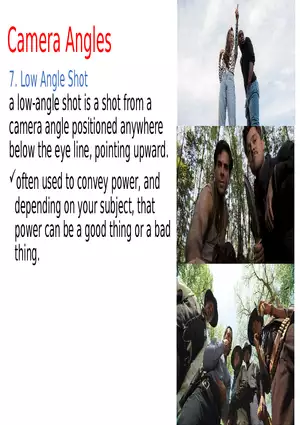Study Guide
Film Shots and Angles
-
University:
East Georgia State College -
Course:
FILM 1100 | Introduction to Film Academic year:
2022
-
Views:
403
Pages:
3
Author:
StellarSymphony
Report
Tell us what’s wrong with it:
Thanks, got it!
We will moderate it soon!
Report
Tell us what’s wrong with it:
Free up your schedule!
Our EduBirdie Experts Are Here for You 24/7! Just fill out a form and let us know how we can assist you.
Take 5 seconds to unlock
Enter your email below and get instant access to your document











